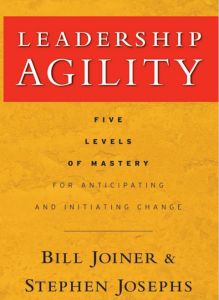Зарегистрируйтесь на getAbstract, чтобы получить доступ к этому краткому изложению.

Зарегистрируйтесь на getAbstract, чтобы получить доступ к этому краткому изложению.
Bill Joiner and Stephen Josephs
Leadership Agility
Five Levels of Mastery for Anticipating and Initiating Change
Jossey-Bass, 2006
Что внутри?
Today’s business environment requires “agile” leaders comfortable with accelerating rates of change.
Recommendation
In the modern economy, agility is the most important leadership skill, assert consultants Bill Joiner and Stephen Josephs. Yet, fewer than 10% of managers can contend with today’s degree of complexity and turbulence. The authors describe five levels of leadership agility and offer advice on moving up the ranks to higher levels. The authors’ model is complex: The five levels of leadership depend on skills in four competency areas, each of which draws on two mental capacities – some of which break into further subcategories. Don’t focus on the theoretical framework; dive into the helpful case histories and analysis. getAbstract recommends this heavily researched, story-rich manual to any manager or entrepreneur aspiring to visionary leadership.
Summary
About the Authors
Leadership consultant Bill Joiner teaches at Boston College’s Center for Leadership and Ethics. He and executive coach Stephen Joseph founded the consulting firm ChangeWise.

















Comment on this summary